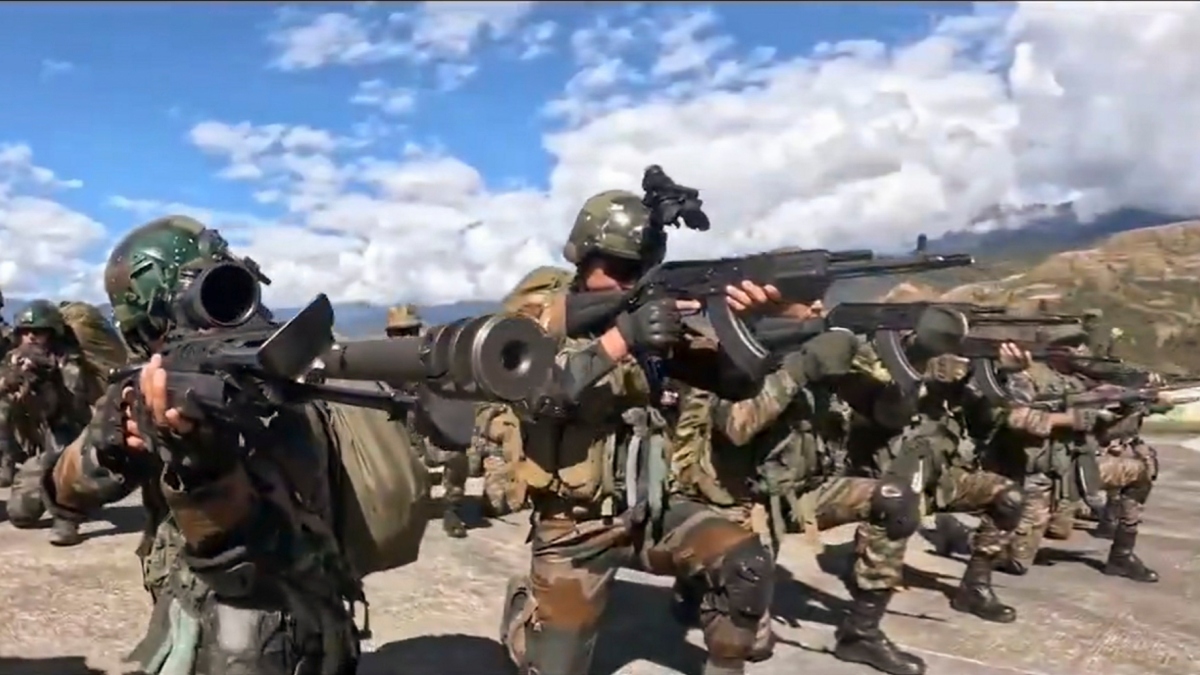What is India’s end game? The case for over-the-horizon retaliation
 Image of Indian Army soldiers during a drill used for representation | PTI
Image of Indian Army soldiers during a drill used for representation | PTI
There is a question incisive foreign strategic experts have been asking in the aftermath of the genocidal Islamist terror attack last week in a scenic meadow in the Union territory of Jammu and Kashmir which killed 26 innocents: What is Delhi’s end game? It is an important question to attempt an answer to. For, the notion of long-term deterrence must become part of the vocabulary in the public narrative on the issue of terrorism in Kashmir and the role played by Pakistan in fostering it over the past 30-odd years.
It was stated explicitly by a senior Pakistani politician, Cabinet (Railways) Minister Hanif Abbasi on 27 April, that his country’s “nuclear weapons (and the missiles to deliver them) are not for show… they are targeted at India.” Abbasi was neither letting out a state secret nor just upping the rhetoric. He was articulating a stand that has been internalised by the civilian and military decision-making elite in Islamabad.
The urgency to define the Indian end game, therefore, is acute.
Here it is:
• Launch a multi-pronged over-the-horizon attack to completely destroy Islamabad’s nuclear programme and eliminate those working on it
• Look closely at the Israeli action-plan to destroy Iran’s nuclear infrastructure as well US-South Korean contingency plans to take out Pyongyang’s nukes
• Engage substantively with and onboard Beijing before taking action
• Assure Washington that while India is broadly aligned with the US in the Indo-Pacific, it won’t necessarily be part of a strategy to contain China’s rise
• The world will thank India for one less (rogue) nuclear state to deal with
• The action could well send the Pakistan Army back to the barracks and put it under civilian control
• And Delhi would acquire the space to put in place a policy to restore the Kashmir Valley’s demographic balance, which would go some way in mitigating the domestic ‘root causes’ of terror.
How’s that for an end game? Even the most fastidious of strategists would concede it is one, whether they endorse it or not. The question is whether India can risk it at this stage of its development trajectory. For, get it wrong and the downside is pretty stark. We make an enemy of both China and the US, Pakistan will live to fight another day, our strategic-restraint brownie points will be gobbled up at one go, and the escalatory ladder may morph rapidly into an elevator.
It is, then, essentially about parsing the risk and weighing our capabilities for such an action – honestly, sans hyperbole, and deep within the strategic establishment. If the answer is yes, double check and act on confirmation. If the answer is no, cross check and abort on validation. If the answer is maybe, then stick to cross-border overt and covert kinetic actions that India’s highly professional armed and special forces and eminently capable of.
In the aftermath of the Pahalgam terror attack, there is a lot of punditry doing the rounds on media platforms. Much of it focuses on a proportionate yet effective response to the barbarism of 22 April. But it is by definition only a disproportionate response which can be effective given the intractability of the ideology that motivates the attackers. Ergo, see above.
Proportionality has long been a subjective word in the strategic matrix. One state’s proportionality is another state’s war crime, after all. But we need to enter a caveat: Timing is all. The path to the end game being advocated is a treacherous one and fail or succeed, its import will be hugely consequential. It is, therefore, entirely for the government to decide if and when to green light it. The argument being made here is that it may be wise to define our end game. If not now, when?
There is no doubt that India will, as Prime Minister Narendra Modi has asserted, pursue the perpetrators of the Pahalgam mass murders and its promoters across the border “till the ends of the earth” and justice will be served. The actions announced thus far by Delhi including putting the Indus Water Treaty in abeyance signal a clear intent to think over the longer term on how to impose costs on Islamabad. For instance, it could take years for India to dam and/or divert Pakistani rivers but the message being sent out is clear. In the same vein, how best taking out Pakistan’s nuclear infrastructure may be achieved, when we are ready, must be the sole focus of a dedicated team within the national security establishment. If it isn’t already.
The author is Director - Programs and Senior Fellow, Pahle India Foundation.
The opinions expressed in this article are those of the author and do not purport to reflect the opinions or views of THE WEEK
Defence